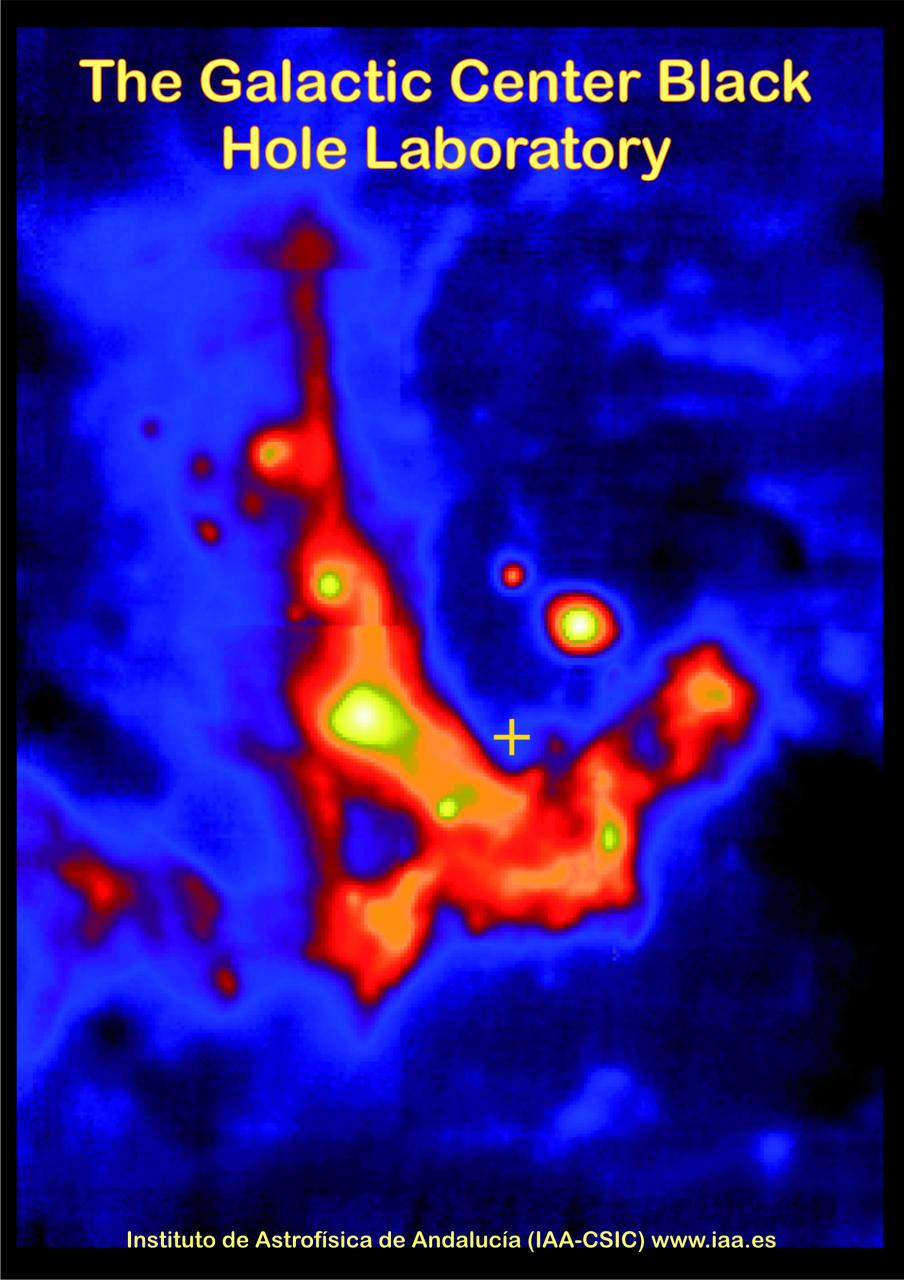Black hole in centre of Milky Way serves as experimental laboratory
Experts from around the world are meeting this week at the Institute of Astrophysics of Andalusia (IAA-CSIC) to discuss the progress made on the study of the centre of our galaxy
Experts from around the world are meeting this week at the Institute of Astrophysics of Andalusia (IAA-CSIC) to discuss the progress made on the study of the centre of our galaxy
The Galactic Centre Black Hole Laboratory Congress will begin tomorrow morning at 10 and will run through Thursday; it will bring together international experts in the study of Sagittarius A* (or Sgr A*), the supermassive black hole located in the centre of our galaxy.

"SgrA*, the compact source at the dynamic centre of our galaxy, with a mass of four million suns, is the supermassive black hole nearest to Earth and offers a unique opportunity to study gravity under extreme conditions,” says Antxon Alberdi, researcher at the Institute of Astrophysics of Andalusia (IAA-CSIC) and organizer of the congress.
In fact, these conferences coincide with an intense observation campaign to study the passage of a cloud of dust known as G2 only thirty six light hours away from Sagittarius A*. With a mass equivalent to three times that of planet Earth, G2 has shown important deformations in the course of 2013 and is an ideal object to investigate the gravitational effects of Sgr A*.
The results of the study of this phenomenon in different wavelengths (from infrared to X rays) will be discussed during the conferences, and the research regarding our galactic centre will also be put in perspective. SgrA* presents a low luminosity compared to other known supermassive black holes and is considered to be in a state of ‘lethargy’. Thus, a comparison will be sought with similar objects in other galaxies known as active galactic nuclei.
Researchers will dwell on the theoretical foundations of black holes: mechanisms that nourish them, processes that allow for the material growth of the environment, as well as the nature of the event horizon or region around the black hole in which gravity is so intense that even light cannot escape it.
Finally, since both the activity and the properties of supermassive black holes depend to a large extent on their environment (and vice versa, since these objects strongly influence their environment), the latest discoveries about processes governing the formation of stars, properties of the interstellar medium, magnetic fields and the dynamics of regions close to this type of object will also be reviewed.
The congress has been organized by the Institute of Astrophysics of Andalusia (IAA-CSIC) and is sponsored by the University of Cologne, the MP0905 COST program (European Cooperation in Science and Technology) and the RadioNet3 program, financed by the Frame Program of the European Community (FP7).
Web page of meeting: http://galacticcenter.iaa.es/
